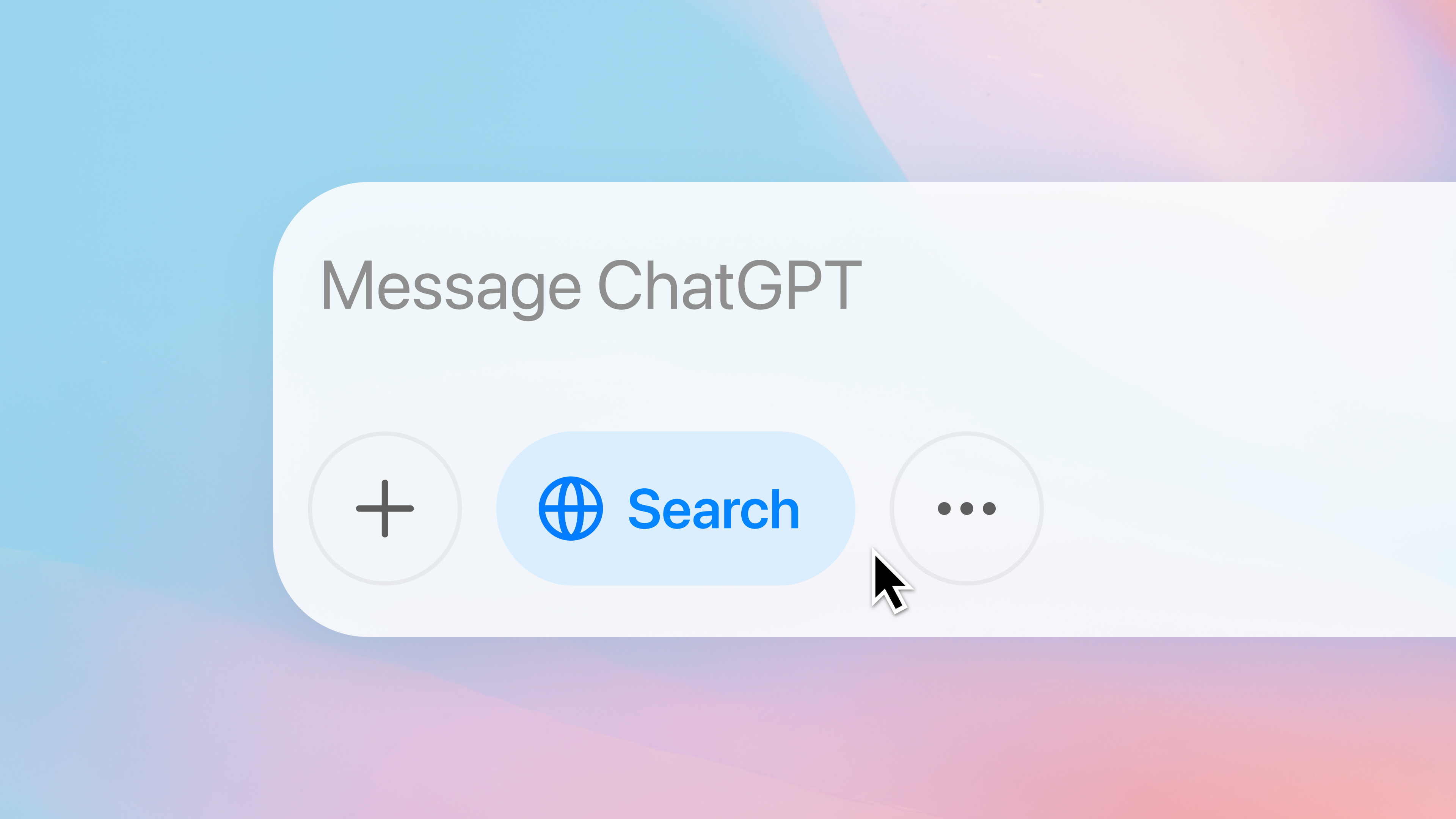Claude vs ChatGPT explained: What each AI does best — and how to choose the right one
Here’s how to pick the best AI for your workflow

Not all chatbots are created equal. OpenAI’s ChatGPT and Anthropic’s Claude are two of the most capable AI assistants available today, but they’re built with different strengths, personalities and design philosophies.
Whether you're looking for a creative collaborator, a coding partner or an all-in-one productivity tool, knowing how they compare can help you choose the right one for your style and needs.
I've been testing AI chatbots for years, so let me break down the ChatGPT vs Claude differences that you need to know.
Claude 4 vs ChatGPT: Overview

While many users are eagerly anticipating the release of ChatGPT-5, OpenAI’s current flagship model is GPT-4o (short for “Omni”), and the company’s most advanced base model to date. It supports multimodal input and output, meaning it can understand and respond to text, image, and audio, and it enables real-time interactions, including natural voice conversations and image generation.
Anthropic’s Claude 4, released in May 2025, comes in two versions. Claude Sonnet 4 is the free, fast, general-purpose model built for everyday use, while Claude Opus 4 is a premium model designed for deep reasoning, advanced coding tasks and large-scale context handling.
It’s built to power more complex workflows and long-form problem-solving.
Claude 4 vs ChatGPT: Platform availability

ChatGPT is available on the web, iOS and Android, and it’s tightly integrated into Microsoft’s ecosystem through Copilot in Bing, Word, Excel and other Office apps.
Get instant access to breaking news, the hottest reviews, great deals and helpful tips.
Claude 4, meanwhile, is accessible via claude.ai on the web, iOS and Android.
Developers and enterprise users can also access Claude via the Anthropic API, as well as through platforms like GitHub Copilot, AWS Bedrock and Google Cloud’s Vertex AI.
Claude 4 vs ChatGPT: Context and memory

ChatGPT, powered by GPT-4o, offers strong conversational memory and supports multimodal input, including text, images, audio, file uploads and code execution. Users can personalize interactions with memory settings and even build custom GPTs for specific tasks.
Although Claude does not have a memory feature, Claude 4 supports up to 200,000 tokens of context, allowing it to handle and retain significantly more information in a single conversation; the equivalent of more than 500 pages of text.
Claude 4 vs ChatGPT: Reasoning and capabilities

ChatGPT offers fast, responsive performance and is particularly strong when paired with tools like Microsoft Copilot. Its reasoning abilities are enhanced by plugins, file uploads, and its new Agent feature, which can browse the web, execute tasks and automate workflows across apps.
Claude Sonnet is similarly fast and excels at maintaining depth and continuity in conversations, making it a strong writing partner or analytical assistant.
Claude Opus takes things further with support for multi-hour workflows, legal reasoning, code explanation and complex research tasks. On industry benchmarks like SWE-bench, Claude Opus ranks among the top performers for software engineering use cases.
When it comes to multimodal support, ChatGPT offers more with in-chat image generation, visual context and real-time voice conversations with memory.
Claude supports image input and visual understanding, meaning users can upload an image and the chatbot will assist with comprehension, but it cannot generate images. Also, Claude does not offer real-time conversational chat.
Claude 4 vs ChatGPT: Tone and interaction style

Claude 4, especially in its Sonnet form, stands out for its natural, thoughtful tone. It often feels more like a helpful assistant offering clear explanations, thoughtful suggestions and a calm, conversational flow. If you’re writing, brainstorming or trying to make sense of something complex, Claude tends to feel more human in how it engages.
ChatGPT is professional, polished and highly adaptable, with the ability to shift tones based on a user's preference or task. It is arguably more chatty than Claude, which appeals to some users more than others.
Claude 4 vs ChatGPT: Tool integrations and agent capabilities

ChatGPT supports a broad set of integrations including custom GPTs, an extensive plugin ecosystem, and Microsoft Copilot.
Its new ChatGPT Agent feature (currently in early access) allows it to take real action on your behalf: browsing the web, interacting with forms, generating presentations and more all within a secure sandboxed environment.
Claude 4 doesn’t yet offer a native agent feature through its user interface, but it does support tool use and extended workflows through its API. It also integrates with GitHub Copilot, AWS Bedrock and other developer platforms, making it a strong option for those building their own agentic systems.
Why choose ChatGPT over Claude?

If you're looking for an all-in-one AI assistant, ChatGPT is the more versatile choice. It can speak, see, listen, browse, generate images, analyze documents and automate tasks. Its voice mode feels remarkably human and is useful for a hands-free experience. The chatbot's ability to create and understand images adds another layer of functionality that Claude doesn’t natively support.
ChatGPT also integrates seamlessly with Microsoft products and lets users build custom GPTs tailored to their specific needs. And for power users, the new ChatGPT Agent adds another level of autonomy and actionability that’s unmatched in most other consumer-facing AI tools.
Why choose Claude over ChatGPT?

Claude 4 shines in natural language understanding and thoughtful conversation. It’s ideal for users who prioritize clarity, warmth and coherence in writing, editing and reasoning.
Whether you’re crafting long-form content or analyzing dense documents, Claude delivers consistently thoughtful and easy-to-follow responses.
Its 200K-token context window makes it the better choice for handling long inputs like research papers or legal contracts. Claude Opus, in particular, is built for high-stakes reasoning tasks and delivers top-tier performance for technical, legal and academic work.
Even better, Claude Sonnet 4 is free, making it an excellent entry point for users who want fast, capable AI without paying for a subscription.
Final thoughts
Both ChatGPT and Claude are chatbots that I use every day. But they serve different goals.
ChatGPT is my go-to for versatility, real-time interaction and multimodal tasks while Claude is what I use most often for summarizing, reasoning, deep context and analytics.
Knowing what each excels at can help you choose the right assistant, or mix and match based on what you're trying to accomplish.
Which chatbot do you prefer and why? Let me know in the comments.
Follow Tom's Guide on Google News to get our up-to-date news, how-tos, and reviews in your feeds. Make sure to click the Follow button.
More from Tom's Guide
- AI is being powered in the weirdest places — including poop, barges, and secret bunkers
- I upgraded to Alexa+ for my busy family — here’s what it did surprisingly well
- I test ChatGPT for a living — use this ‘3-word rule’ to get smarter answers

Amanda Caswell is an award-winning journalist, bestselling YA author, and one of today’s leading voices in AI and technology. A celebrated contributor to various news outlets, her sharp insights and relatable storytelling have earned her a loyal readership. Amanda’s work has been recognized with prestigious honors, including outstanding contribution to media.
Known for her ability to bring clarity to even the most complex topics, Amanda seamlessly blends innovation and creativity, inspiring readers to embrace the power of AI and emerging technologies. As a certified prompt engineer, she continues to push the boundaries of how humans and AI can work together.
Beyond her journalism career, Amanda is a long-distance runner and mom of three. She lives in New Jersey.
You must confirm your public display name before commenting
Please logout and then login again, you will then be prompted to enter your display name.










